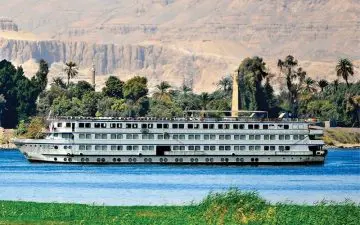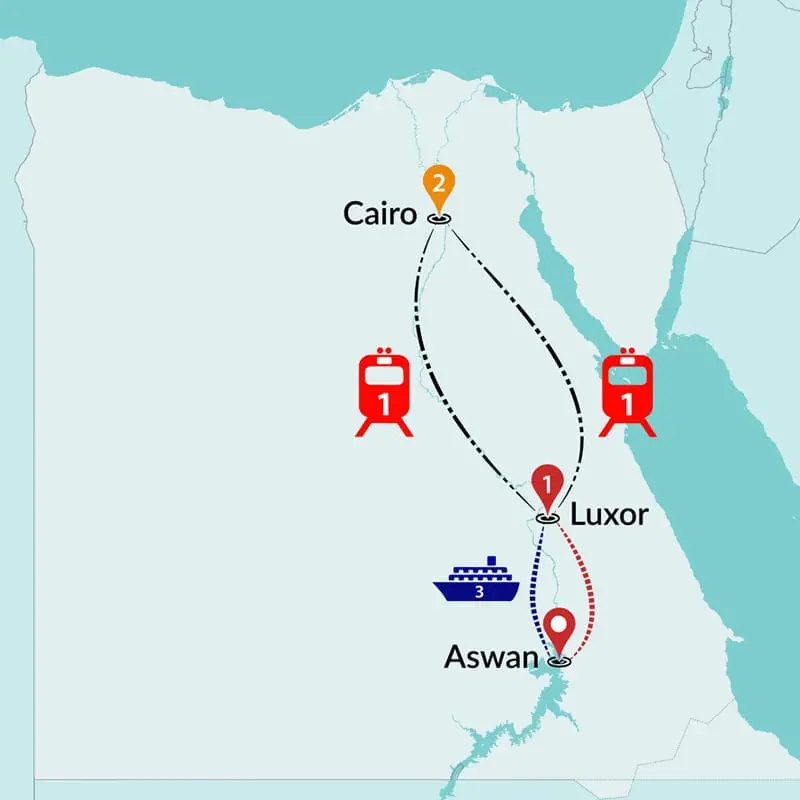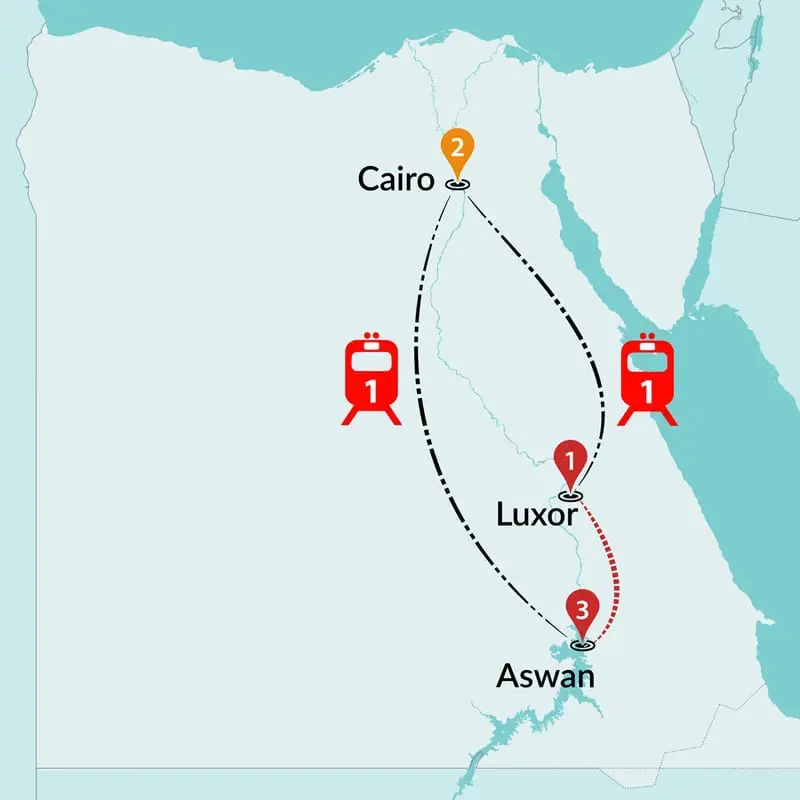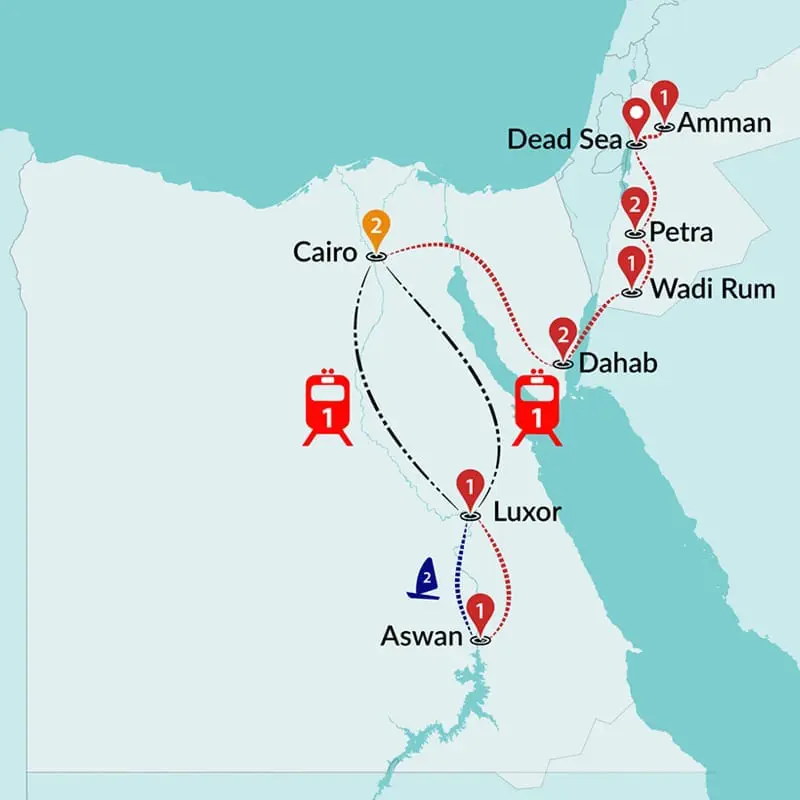Best Time To Visit the Balkans
The best time to visit the Balkans is from April to December when the weather is pleasant for enjoying the coast and the inland attractions from Greece to Serbia. Spring and autumn offer breathtaking views across the diverse region, and the weather is ideal for cultural trips to the historic sites that have been home to numerous empires.
Summers are hot and busy in the Balkan countries. From June to August, the coastal paradises of Dubrovnik and Kotor are bustling with life. It is a great time to witness memorable music and art festivals in the iconic cities and spend warm evenings surrounded by spectacular architecture.
In winter, chilly weather and snowfall dominate the climate in the inner regions like Macedonia and Serbia. Coastal countries have warmer weather, but precipitation levels are high across the Balkans throughout the winter.
Why You Should Visit the Balkans: The Balkans, situated in southeastern Europe, offer a diverse array of attractions, from stunning natural landscapes to rich history and culture. Visitors can explore picturesque coastal towns along the Adriatic Sea, hike through majestic mountain ranges, and discover ancient ruins and monuments. The region boasts a delicious culinary scene and some of the world’s best wines, making it a foodie’s paradise. With affordable prices and easy accessibility, the Balkans are a must-visit destination for any traveler looking to experience a unique and authentic European holiday.
Things to Consider: When planning a trip to the Balkans, there are a few things to consider to ensure an enjoyable and stress-free experience. Firstly, research the region’s history, culture, and customs to gain a better understanding of the local way of life. Pack appropriate clothing and gear for the season and activities you plan to undertake. Be prepared to try the delicious local cuisine, which varies greatly from country to country. Finally, make sure to plan your transportation and accommodation in advance, as the Balkans can be difficult to navigate without prior arrangements. By considering these factors, you can make the most out of your trip to this beautiful and diverse region.
Monthly Travel Guide For the Balkans
Travelling in the Balkans in January and February
January and February are the coldest months in all of the Balkans. Temperatures may be as low as -5°C inland, and weather in the mountainous countries is crisp, bringing heavy snowfall. As the skies are dark with clouds most days, it is not the best time to visit the Balkans for capturing the views of the cozy countryside and the ancient towns.

Travelling in the Balkans between March and May
Spring is the best time to visit the Balkans, as the changing countryside hosts some of the most breathtaking natural landscapes. Temperatures rise in March, but occasional rains last till early April. So, packing up for wet weather is recommended.
The beach season on the coast slowly begins in April as the days get longer and the weather is moderate. April and May offer the best sceneries and the ideal temperatures for traveling across the diverse land of the Balkans and enjoying the ageless cities on the way. These are also the shoulder months, meaning that you will find the streets and historic sites less busy than in summer.

Travelling in the Balkans between June and August
June to August, temperature varies in the high 20s, rising above 30°C in Albania and Montenegro. It is the busiest time in the iconic cities and the peak season for cultural festivities. June is relatively quieter before the European holiday begins, making it the best time to visit the Balkans and enjoy sunny days before the flocks arrive.
In July and August, the picturesque towns are buzzing with life. It is a wonderful time to enjoy the unique local tastes and music shows on breezy evenings.

Travelling in the Balkans in September
September is one of the best months for both cultural tours in the inner regions and enjoying the vibrant city life on the coast. Temperatures drop to comfortable levels with an average of 25°C. The end of the holiday season leaves the coastal cities. It is the best time to visit the Balkans to find the must-see attractions quiet again.

Travelling in the Balkans in October and November
Balkans tours have a lot to offer in the fall shoulder season. The weather is still comfortably warm in the south, while northern countries like Serbia begin experiencing cooler weather. Rainfall is more frequent from mid-November, especially in the coastal towns of Croatia and Montenegro.
If you have the right clothing for the chilly weather, autumn is the best season to enjoy some refreshing time in the Balkan countryside surrounded by fairytale-like streets and buildings.
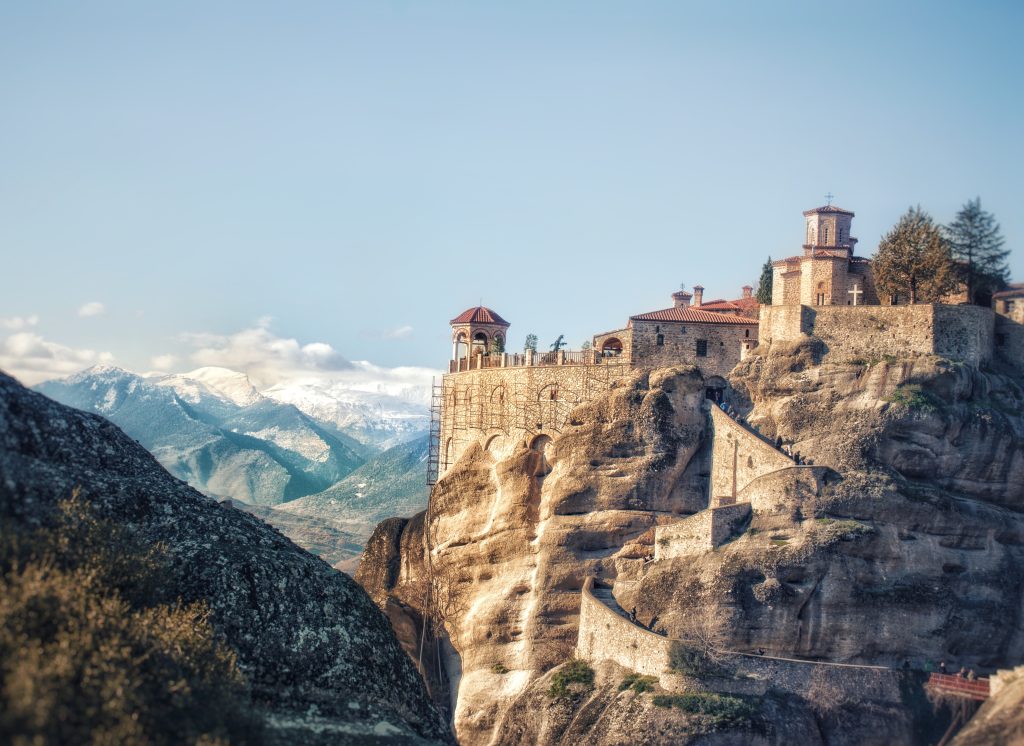
Travelling in the Balkans in December
December is a cold month across the region, bringing rain and snow to the mountains and the Adriatic coast. However, it offers some of the most spectacular panoramic views as you travel across the diverse geography of the Balkans.
Authentic town life is at its best at this time of year when the locals are preparing for New Year’s Eve. The colorful Christmas markets and dazzling lights offer a unique festive spirit in the historic cities. Pack up warm layers as the temperature usually drops below zero in the inner regions.
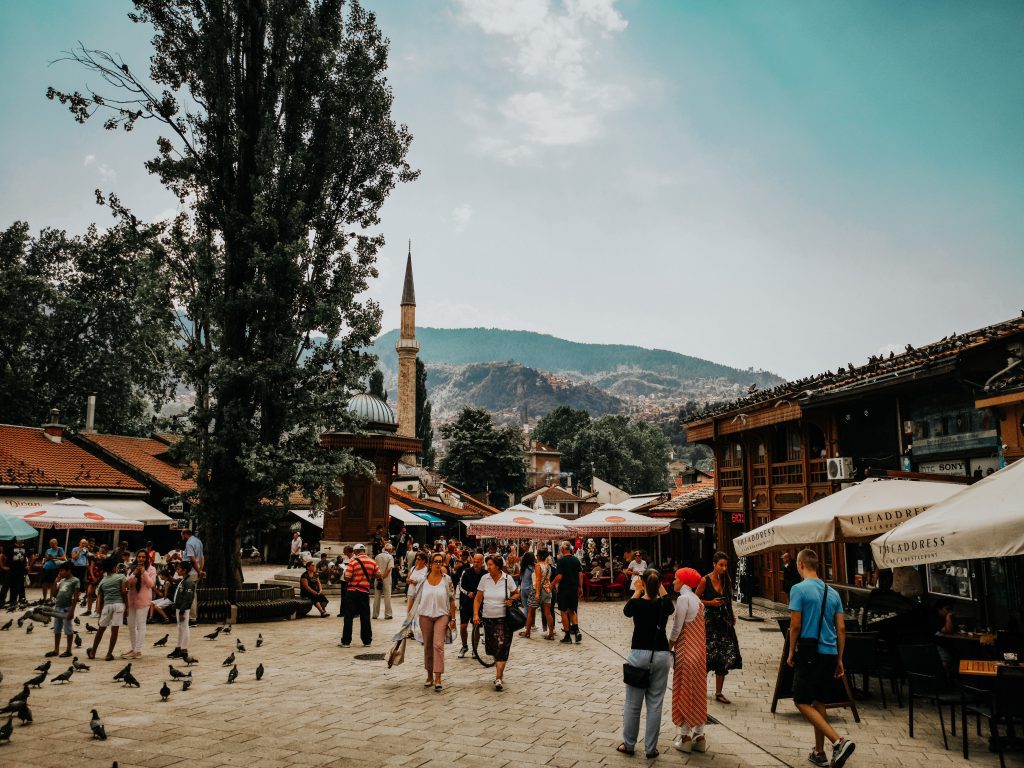
Balkans Climate & Weather Guide
| Region | Jan | Feb | Mar | Apr | May | Jun | Jul | Aug | Sep | Oct | Nov | Dec |
|---|---|---|---|---|---|---|---|---|---|---|---|---|
| Sofia | 2°C | 4°C | 9°C | 14°C | 18°C | 22°C | 25°C | 25°C | 22°C | 16°C | 7°C | 3°C |
| Belgrade | 3°C | 5°C | 10°C | 15°C | 23°C | 26°C | 29°C | 29°C | 24°C | 18°C | 11°C | 3°C |
| Sarajevo | 1°C | 2°C | 11°C | 14°C | 20°C | 22°C | 25°C | 25°C | 22°C | 16°C | 7°C | 2°C |
| Dubrovnik | 11°C | 11°C | 13°C | 16°C | 21°C | 25°C | 27°C | 27°C | 24°C | 20°C | 15°C | 12°C |
| Budva | 7°C | 6°C | 10°C | 14°C | 18°C | 22°C | 26°C | 27°C | 23°C | 18°C | 14°C | 9°C |
| Ohrid | 2°C | 3°C | 10°C | 13°C | 18°C | 22°C | 25°C | 25°C | 22°C | 16°C | 10°C | 3°C |
| Skopje | 1°C | 5°C | 11°C | 15°C | 22°C | 27°C | 30°C | 29°C | 26°C | 19°C | 10°C | 3°C |
| Region | Jan | Feb | Mar | Apr | May | Jun | Jul | Aug | Sep | Oct | Nov | Dec |
|---|---|---|---|---|---|---|---|---|---|---|---|---|
| Sofia | 36°F | 40°F | 49°F | 58°F | 66°F | 73°F | 78°F | 78°F | 72°F | 61°F | 46°F | 38°F |
| Belgrade | 40°F | 44°F | 54°F | 64°F | 74°F | 80°F | 84°F | 84°F | 75°F | 65°F | 52°F | 42°F |
| Sarajevo | 36°F | 42°F | 52°F | 58°F | 68°F | 73°F | 78°F | 78°F | 72°F | 61°F | 46°F | 37°F |
| Dubrovnik | 52°F | 53°F | 57°F | 62°F | 70°F | 77°F | 82°F | 82°F | 76°F | 69°F | 59°F | 54°F |
| Budva | 44°F | 46°F | 51°F | 57°F | 64°F | 72°F | 79°F | 80°F | 73°F | 65°F | 58°F | 48°F |
| Ohrid | 40°F | 42°F | 50°F | 56°F | 65°F | 72°F | 78°F | 78°F | 72°F | 61°F | 50°F | 42°F |
| Skopje | 38°F | 46°F | 56°F | 64°F | 73°F | 81°F | 86°F | 85°F | 79°F | 67°F | 51°F | 41°F |
| Region | Jan | Feb | Mar | Apr | May | Jun | Jul | Aug | Sep | Oct | Nov | Dec |
|---|---|---|---|---|---|---|---|---|---|---|---|---|
| Sofia | 81 mm | 53 mm | 93 mm | 89 mm | 106 mm | 131 mm | 87 mm | 40 mm | 48 mm | 68 mm | 42 mm | 59 mm |
| Belgrade | 84 mm | 86 mm | 85 mm | 62 mm | 140 mm | 127 mm | 65 mm | 43 mm | 61 mm | 86 mm | 67 mm | 77 mm |
| Sarajevo | 61 mm | 54 mm | 55 mm | 52 mm | 69 mm | 59 mm | 34 mm | 21 mm | 27 mm | 41 mm | 43 mm | 53 mm |
| Dubrovnik | 142 mm | 128 mm | 117 mm | 109 mm | 84 mm | 70 mm | 50 mm | 61 mm | 94 mm | 129 mm | 175 mm | 167 mm |
| Budva | 152 mm | 132 mm | 116 mm | 62 mm | 59 mm | 53 mm | 21 mm | 19 mm | 55 mm | 116 mm | 201 mm | 127 mm |
| Ohrid | 52 mm | 38 mm | 40 mm | 42 mm | 58 mm | 45 mm | 39 mm | 33 mm | 38 mm | 37 mm | 44 mm | 35 mm |
| Skopje | 79 mm | 69 mm | 84 mm | 83 mm | 91 mm | 64 mm | 30 mm | 24 mm | 48 mm | 65 mm | 66 mm | 67 mm |
| Region | Jan | Feb | Mar | Apr | May | Jun | Jul | Aug | Sep | Oct | Nov | Dec |
|---|---|---|---|---|---|---|---|---|---|---|---|---|
| Sofia | 13 | 10 | 7 | 2 | 0 | 0 | 0 | 0 | 0 | 1 | 3 | 9 |
| Belgrade | 8 | 6 | 2 | 0 | 0 | 0 | 0 | 0 | 0 | 0 | 1 | 4 |
| Sarajevo | 4 | 13 | 9 | 3 | 0 | 0 | 0 | 0 | 0 | 1 | 4 | 10 |
| Dubrovnik | 0 | 0 | 0 | 0 | 0 | 0 | 0 | 0 | 0 | 0 | 0 | 0 |
| Budva | 0 | 1 | 0 | 0 | 0 | 0 | 0 | 0 | 0 | 0 | 0 | 0 |
| Ohrid | 7 | 6 | 4 | 0 | 1 | 0 | 0 | 0 | 0 | 0 | 1 | 4 |
| Skopje | 5 | 3 | 1 | 0 | 0 | 0 | 0 | 0 | 0 | 0 | 0 | 3 |
| Region | Jan | Feb | Mar | Apr | May | Jun | Jul | Aug | Sep | Oct | Nov | Dec |
|---|---|---|---|---|---|---|---|---|---|---|---|---|
| Sofia | 8 km/h | 9 km/h | 9 km/h | 8 km/h | 8 km/h | 7 km/h | 7 km/h | 7 km/h | 7 km/h | 7 km/h | 7 km/h | 8 km/h |
| Belgrade | 11 km/h | 12 km/h | 12 km/h | 11 km/h | 10 km/h | 9 km/h | 9 km/h | 8 km/h | 9 km/h | 10 km/h | 11 km/h | 11 km/h |
| Sarajevo | 8 km/h | 9 km/h | 9 km/h | 8 km/h | 8 km/h | 7 km/h | 7 km/h | 6 km/h | 7 km/h | 7 km/h | 8 km/h | 8 km/h |
| Dubrovnik | 16 km/h | 17 km/h | 16 km/h | 13 km/h | 12 km/h | 11 km/h | 11 km/h | 10 km/h | 12 km/h | 13 km/h | 15 km/h | 16 km/h |
| Budva | 12 km/h | 13 km/h | 12 km/h | 10 km/h | 9 km/h | 9 km/h | 9 km/h | 9 km/h | 10 km/h | 10 km/h | 11 km/h | 12 km/h |
| Ohrid | 8 km/h | 9 km/h | 8 km/h | 7 km/h | 7 km/h | 6 km/h | 6 km/h | 6 km/h | 7 km/h | 7 km/h | 7 km/h | 8 km/h |
| Skopje | 7 km/h | 9 km/h | 9 km/h | 8 km/h | 7 km/h | 7 km/h | 7 km/h | 7 km/h | 7 km/h | 7 km/h | 7 km/h | 7 km/h |
When to visit the Balkans
Trips to the Balkans in Spring and Fall
Spring and fall are the best seasons to visit the Balkans for a trip filled with unique culture and history. As the Balkans covers a vast geographical area of diverse natural wonders, the changing scenery across the countries will provide you with the most satisfying photographic experience. The warm and sunny days make it an ideal time to enjoy long walking tours in the coastal paradises of Montenegro and Croatia, as quiet time and local delicacies await in the inner cities.
It is the best time to visit the Balkans since autumn brings mild weather and clear blue skies. From September to early December, the ageless woodlands in the countryside are painted with vibrant reds and oranges, creating a fascinating atmosphere. Sightseeing and cultural tours among the chapels and monasteries in the southern regions and admiring the architectural wonders in the northern countries become a joyful experience in fall. From the waterfalls and lakes of Bosnia-Herzegovina to the hilltop towns of Delphi, the countryside hosts golden views and a unique perspective of nature. Our All About Balkans trip offers the perfect combination of culture and leisure time in the highlight attractions of the Balkans from spring to fall.
Tips for visiting Balkans in the spring and fall:
– It’s important to dress in layers so you can adjust your clothing as needed throughout the day.
– Spring and fall in the Balkans can also bring rain and other inclement weather, so it’s a good idea to pack waterproof gear.
– Consider visiting off-the-beaten-path destinations such as Sarajevo, Mostar, or Kotor.
– Try local specialties such as cevapi (grilled sausages), burek (a savory pastry), or goulash (a stew made with meat and vegetables).
– As with many destinations in Europe, the Balkans experience shorter daylight hours in the fall and winter. Plan your activities accordingly.
The Balkans from April to September
April to September is an exciting time for Balkans tours, as long hours of sunlight and warm weather make traveling comfortable and pleasant. Around late June, the lively coastal cities like Dubrovnik and Kotor are buzzing with summer vibes. As tourism hits the top in the summer months, the cozy cafes and bars of the old towns turn into hotspots of great nightlife.
It is also an ideal time for local festivals, which are hard to miss as you travel across the region. Shows in the open-air Roman amphitheaters and beaches take place from June to August, offering the chance to witness the most vibrant times in the Balkan countries. For panoramic city tours, a lively atmosphere, and perfect weather to enjoy the Adriatic coast, April to September is the best time to visit the Balkans.
Best things to do in the Balkans in spring and fall:
– Dubrovnik, Croatia: This beautiful coastal city is a popular destination year-round, but spring and fall offer milder weather and fewer crowds.
– Sarajevo, Bosnia and Herzegovina: Enjoy traditional Bosnian food, explore the city’s Ottoman-era bazaar, or take a day trip to nearby Mostar.
– Ohrid, North Macedonia: This picturesque town on the shores of Lake Ohrid is a UNESCO World Heritage site, with a rich history dating back to ancient times.
– Belgrade, Serbia: Visit the historic Kalemegdan Fortress, stroll along the Danube riverfront, or attend a concert or festival in Belgrade.
Balkans FAQ
What’s the best time to visit the Balkans for budget travellers?
The best time to visit the Balkans for budget travelers is during the low season, which is typically from November to March, excluding the holiday season. Since there are fewer crowds, it may be easier to negotiate prices for tours and activities.
Many Balkan cities host traditional Christmas markets during December, which can be a fun and budget-friendly way to experience local culture and cuisine.
When is the best time to visit the coastal cities in the Balkans?
The best time to visit the coastal cities in the Balkans is during the summer months of June to August. This is when the weather is warm and sunny, and the beaches and water activities are in full swing. The water temperature is perfect for swimming and other water sports.
During the summer months, the coastal cities come alive with festivals, concerts, and outdoor events, making it an ideal time to experience the local culture and nightlife in the Balkans. If you prefer to avoid the crowds, but still enjoy warm weather, then the shoulder months of May and September can also be a good time to visit the coastal cities.
What is the best month to visit the Balkans to beat the crowds?
If you want to beat the crowds, the best time to visit the Balkans is during the shoulder seasons of May and September, or even in October. During these months, the weather is still mild and pleasant, and most tourist attractions and activities are still open.
When is the best time to experience the Balkan culture?
Some of the best times to experience the Balkan culture are during the various festivals and events that take place throughout the region. Each season has its own parade of cultural events and significant dates, it is best to check before you plan your trip.
There are many cultural events and celebrations that take place throughout the year in various Balkan countries. For example, Orthodox Easter, which usually falls in April or May, is a significant religious holiday in many Balkan countries and is celebrated with traditional food, music, and customs.
When is the best time to try Balkan food?
Balkan cuisine is known for its rich and diverse flavors, and there’s no bad time to try it! However, some of the best times to try Balkan food are during the various food festivals and events that take place throughout the region.
One of the most popular food festivals is the Belgrade Food Show, which takes place in October in Belgrade, Serbia. Another food festival worth checking out is the Sarajevo Street Food Festival, which takes place in August in Sarajevo, Bosnia and Herzegovina. This festival showcases traditional Balkan street food and is a great opportunity to sample local specialties.
In Croatia, pasticada is a traditional beef stew that’s often served during Christmas. In Bulgaria, banitsa, a traditional phyllo pastry filled with cheese and spinach, is typically eaten during the Easter holiday.
When is the weather the warmest in the Balkans?
The Balkans region has a diverse climate due to its varied geography, but generally, the warmest weather in the Balkans occurs in the summer months of June, July, and August. During this time, temperatures can range from 25-35°C (77-95°F). Coastal areas and islands tend to have slightly milder temperatures.
How many days do you need to visit the Balkans?
The Balkans is a region in Southeastern Europe that is known for its diverse culture, history, and natural beauty. The number of days you need to visit the Balkans depends on your interests, the countries you want to visit, and the pace at which you want to travel.
If you want to visit all the Balkan countries, including Albania, Bosnia and Herzegovina, Bulgaria, Croatia, Greece, Kosovo, Montenegro, North Macedonia, Romania, Serbia, and Slovenia, you would need several weeks to a month or more.
What is the coldest month in the Balkans?
The Balkans region is quite large and spans across multiple countries, so the coldest month can vary depending on the specific location. However, generally, the coldest month in the Balkans is January.
During January, temperatures can drop below freezing in many parts of the region, particularly in mountainous areas. Cities such as Belgrade, Sarajevo, and Sofia typically experience average temperatures around or below freezing during this month. However, coastal areas such as Dubrovnik and Athens are generally milder, with average temperatures around 10°C (50°F) during January.
What are the best cities to visit in the Balkans?
Dubrovnik, Croatia – This coastal city is known for its stunning old town, surrounded by medieval walls and overlooking the Adriatic Sea. Athens, Greece – This ancient city is known for its rich history and cultural heritage, with landmarks such as the Acropolis, the Parthenon, and the Temple of Olympian Zeus. Sarajevo, Bosnia and Herzegovina – This city is known for its blend of cultures, including Ottoman, Austro-Hungarian, and Yugoslav influences. Belgrade, Serbia – This vibrant city is known for its nightlife, with many bars, clubs, and restaurants. Mostar, Bosnia and Herzegovina – This city is known for its famous Old Bridge, a UNESCO World Heritage Site.
Is it safe to travel to the Balkans?
The Balkans region is generally considered safe for travel, with millions of tourists visiting every year without any issues. However, as with any travel destination, it’s important to take certain precautions to ensure your safety.
Some areas in the Balkans may have higher crime rates, particularly in urban areas, so it’s important to be aware of your surroundings and take common-sense safety precautions such as avoiding carrying large sums of cash or valuable items in public.
What are the most beautiful places in the Balkans?
Dubrovnik, Croatia: This medieval walled city on the Adriatic coast is known for its stunning architecture, picturesque streets, and scenic views. Meteora, Greece: The six monasteries perched atop towering rock formations are a breathtaking sight and a testament to the spiritual devotion of the Eastern Orthodox Church. Mostar, Bosnia and Herzegovina: This picturesque city is famous for its historic bridge spanning the Neretva River, as well as its Ottoman-era architecture and traditional markets. Kotor Bay, Montenegro: This stunning fjord-like bay is surrounded by towering mountains and dotted with charming villages and historic towns. Lake Ohrid, North Macedonia: This ancient lake, known as the “pearl of the Balkans,” is home to hundreds of endemic species of plants and animals, as well as historic monasteries and churches.
Do the Balkans have nightlife?
Yes, the Balkans have a vibrant nightlife scene with numerous bars, nightclubs, and restaurants open until the early hours of the morning. Some cities in the Balkans, such as Belgrade, Sofia, and Thessaloniki, are particularly known for their lively nightlife, offering a wide variety of entertainment options for locals and tourists alike. In addition to traditional bars and nightclubs, the Balkans also have many outdoor venues, such as beach clubs and open-air bars.
Which airlines fly directly into the Balkans?
There are several airlines that fly directly into the Balkans region. Some of the major airlines that operate flights to the Balkans include: Turkish Airlines, Lufthansa, Austrian Airlines, Air Serbia, Wizz Air, Croatia Airlines, Aegean Airlines.
What to wear in the Balkans?
The weather in the Balkans can change quickly, so it’s a good idea to dress in layers. Bring a light jacket or sweater that you can easily remove if it gets too warm. The Balkans is a region with a lot of historic sites and natural beauty to explore, so make sure to bring comfortable walking shoes that you can wear for extended periods of time. If you plan to visit any religious sites or conservative areas, it’s important to dress modestly out of respect for local customs. This may include covering your shoulders and knees. If you’re planning to visit the coast or any of the many beautiful beaches in the Balkans, don’t forget to bring a swimsuit.
What is the Balkans famous for?
The Balkans is home to numerous ancient ruins, monuments, and architectural marvels that reflect the region’s long and complex history. Some of the most famous landmarks in the Balkans include the Acropolis of Athens, the Dubrovnik City Walls, the Mostar Bridge, and the Diocletian’s Palace in Split, Croatia. The Balkans is known for its breathtaking natural landscapes, including mountains, lakes, rivers, and forests. Its delicious and varied cuisine, which combines elements from various cultures and regions. The Balkans has a rich musical and cultural heritage, with various traditional instruments and dance styles that reflect the region’s diverse history and traditions.
What is the best time to eat delicious food in the Balkans?
The Balkans have a rich and diverse culinary tradition, and there is no one “best” time of the year to enjoy delicious food in the region. However, there are certain seasons and occasions when certain foods are particularly abundant or celebrated.
In the summer months (June-August), there are many fresh fruits and vegetables available, including tomatoes, cucumbers, peppers, eggplants, watermelons, and peaches. Grilled meats, such as cevapi, are also popular in the summer, and seafood dishes are especially tasty in coastal areas.
Do you need a visa to visit the Balkans?
The Balkans region consists of several countries, each with its own visa requirements. As such, the need for a visa depends on which Balkan country you plan to visit and your nationality.
For example, if you are a citizen of the European Union (EU), you do not need a visa to enter most Balkan countries as long as your stay is not longer than 90 days. Citizens of some other countries, such as the United States, Canada, and Australia, may also be able to enter some Balkan countries without a visa for stays of up to 90 days, depending on the country.
Balkans by Season

Winter
The Balkans boast a long history and rich cultural heritage, with many museums, galleries, and historic sites to explore. Indoor activities in history-ladened Ohrid, Mostar, and Sofia are perfect to try during the winter months.
Many Balkan cities have beautiful Christmas markets that are filled with festive decorations, local crafts, and traditional foods. Enjoy the season to the fullest.
Best Things to do in the Balkans in winter:
Savor the best of Balkan culture at the Sarajevo Winter Festival in Bosnia and Herzegovina, the Skopje Winter Festival in North Macedonia, and the Sofia Winter Festival in Bulgaria.

Spring
The countryside bursts into vibrant colors as the flowers and trees bloom, and the mountains and rivers come to life after the winter. It is the best time to marvel at the natural beauty surrounding the historic cities in the Balkans.
A great time to explore the region’s outdoor activities such as hiking, cycling, and rafting.
Best Things to do in the Balkans in spring:
Taste the fresh and local ingredients of the Balkans in season, in various traditional Balkan dishes. Catch the music and film festivals across the region.

Summer
The region’s stunning coastline along the Adriatic Sea, including Croatia’s Dalmatian Coast and Montenegro’s Bay of Kotor, offers crystal-clear waters and picturesque beaches that are perfect for swimming, sunbathing, and water sports such as kayaking, sailing, and paddleboarding.
Best Things to do in the Balkans in summer:
Attend the EXIT in Serbia and Sea Dance in Montenegro, food festivals like the Zlatibor Plum Festival in Serbia and the Dubrovnik Wine Festival in Croatia.

Autumn
The stunning natural beauty of the Balkans is particularly evident during the fall, as the foliage changes color and the weather cools down, making it a great time for outdoor activities such as hiking and cycling. Experience the region’s traditional cuisine, as many seasonal dishes feature fresh, locally sourced ingredients
Best Things to do in the Balkans in autumn:
Reward your taste buds with wine festivals such as the Festival of Wine in Skopje, Macedonia, and the Vinodonia Festival in North Macedonia
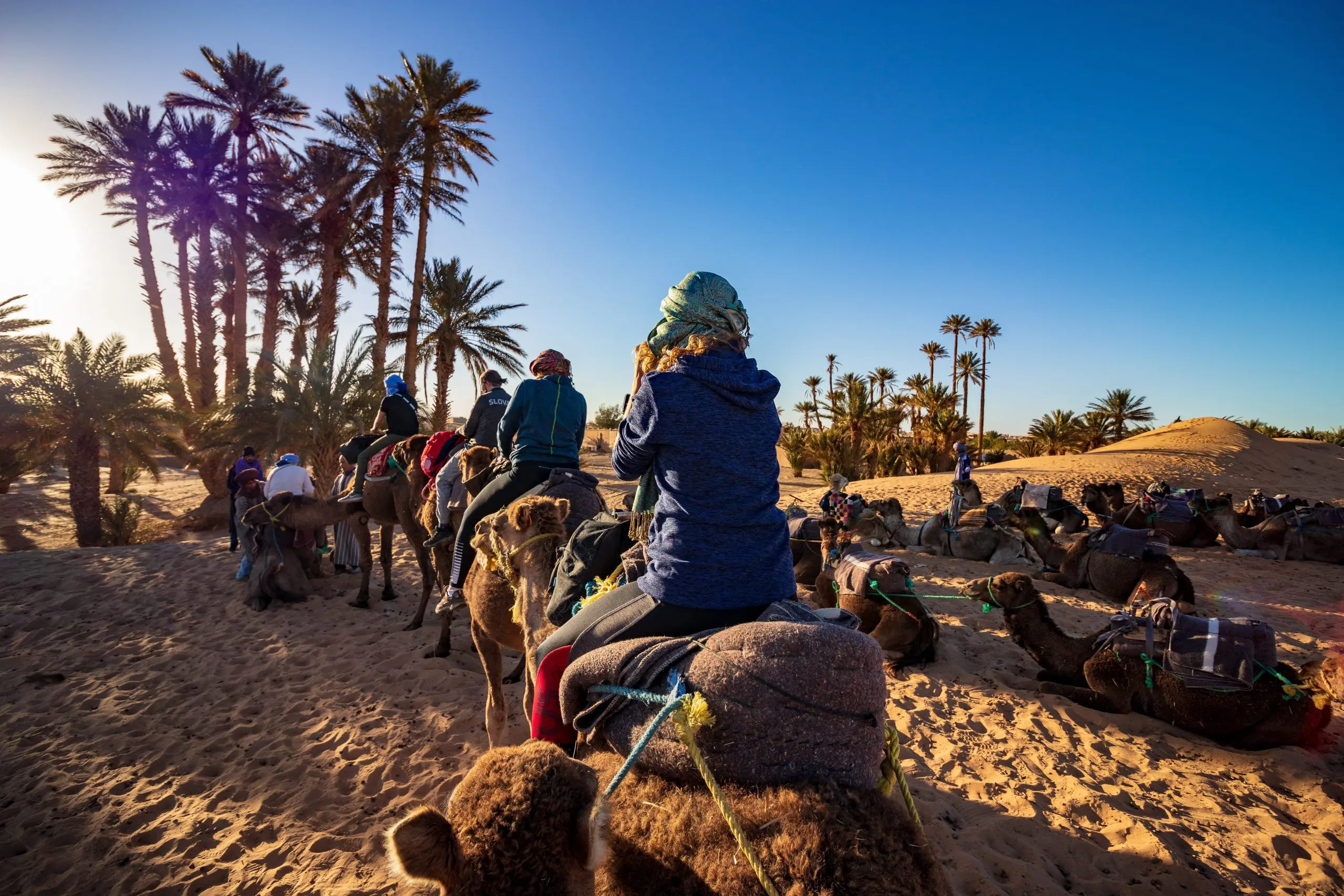 January Sale; 2 For 1
January Sale; 2 For 1  Croatia Sailing : 2 For 1
Croatia Sailing : 2 For 1 Asia Tours : 2 For 1
Asia Tours : 2 For 1 Central & Eastern Europe Tours: 2 For 1
Central & Eastern Europe Tours: 2 For 1  Why Travel Talk
Why Travel Talk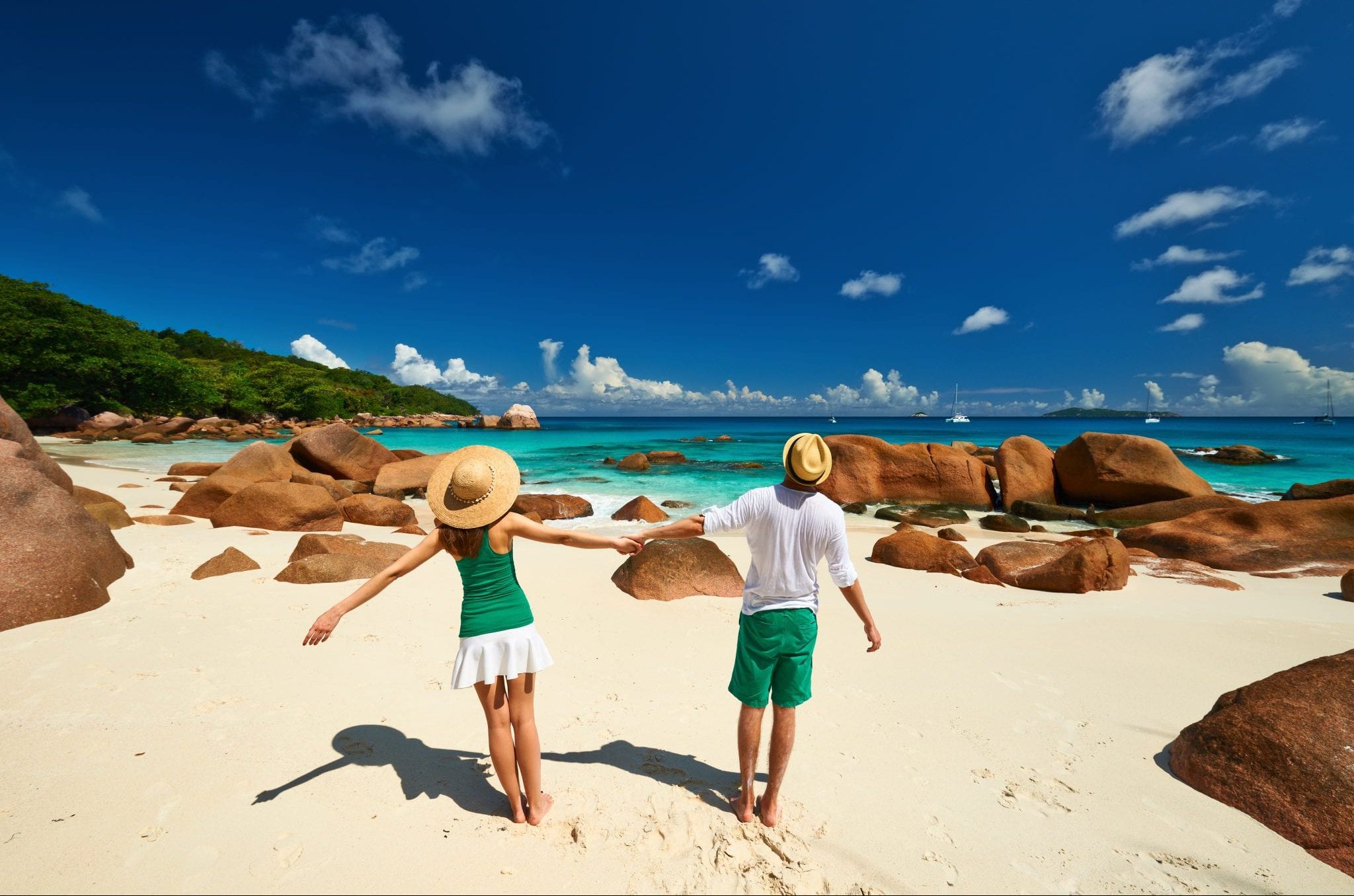 Travel Talk Blog
Travel Talk Blog Responsible Travel
Responsible Travel Fair Travels with Travel Talk
Fair Travels with Travel Talk